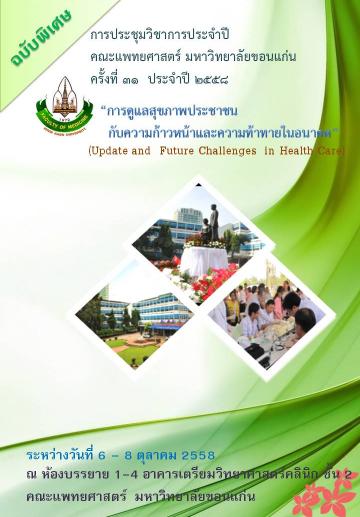The Contamination of Free-Living Amoebae in Tap Water
Keywords:
free living amoebae, tap water, culture, Khon KaenAbstract
Background and Objective: Free-living amoebae (FLA) are worldwide distribution in various environments, including soil, water and dust etc. The member of FLA are include pathogen and non-pathogen amoeba. Moreover, some FLA can act as a host of other pathogenic microorganisms such as Hartmannella, Vannella, Mayorella and Acanthamoeba. The objective of this study is to investigate the contamination of FLA in tap water in Khon Kaen province.
Materials and Methods: Sixty-one tap water samples from three districts including Namphong, Kranaun and Samsung in Khon Kaen province were collected and cultured onto 1.5% non-nutrient agar (NNA) plates overlaid with Escherichia coli. The presence of FLA were based on morphological analysis.
Results: twenty-one samples out of 61 were positive (34.43%). After morphological analysis, trophozoite stage of FLA were similar to Vannella, Paradermamoeba, Hartmannella, Mayorella, Nuclearia and the other 4 different forms of trophozoite. Moreover, the results revealed two different sizes of cyst form.
Conclusion: This study investigated the presence of FLA in tap water in Khon Kaen province. The results revealed FLA that has been reported to be the agent of amoebic keratitis, Hartmannella and amoebae include Vannella and Mayorella that have been reported to be the vectors of pathogenic microorganisms such as Pseudomonas aeruginosa and Amoebophilus simplex respectively. However, these finding need to confirm the genus and species level by molecular technique.


